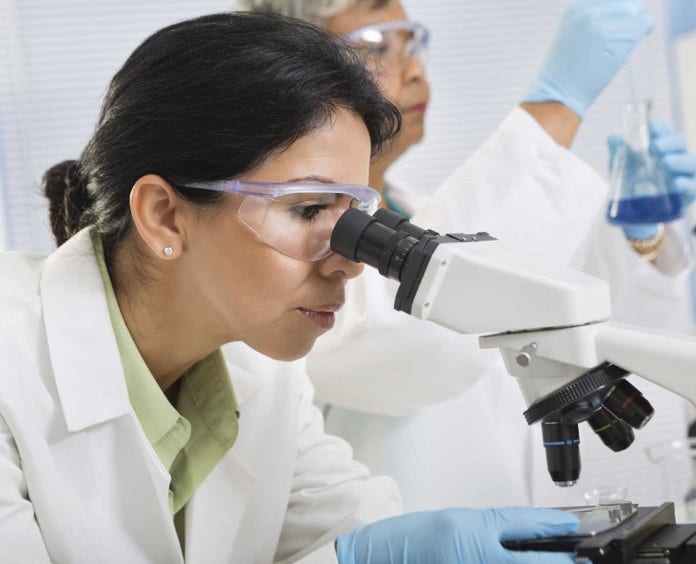Bone Cancer
If you have bone cancer or are close to someone who does, knowing what to expect may be helpful. Here you can find out more about bone cancer, including types, risk factors, symptoms, and how tumors are diagnosed and treated.
Note: This information focuses on bone cancers that are seen most often in adults and start in the bones (primary bone cancers). Osteosarcoma, Ewing sarcoma, and bone metastases are covered separately.
About bone cancer
Bone cancers are tumors that start in a bone.
This is not the same thing as bone metastasis, which happens when cancer starts in another part of the body and then spreads to the bone. Blood cancers like leukemia are also not considered bone cancers, even though they can be found inside bones where blood-forming cells live.
Bone cancer is a type of sarcoma.
A sarcoma is a cancer that develops when cells that normally make up the connective tissues of your body grow out of control. Your connective tissues include your bones and cartilage, as well as your muscles, fat, and the lining of your joints and blood vessels.
Your bones are made up of many kinds of cells and tissues. These start as stem cells and mature into specialized cells that make and maintain the connective tissues of your body. Most of these could develop into cancer, including:
- Osteoblasts: cells that make new bone
- Osteoclasts: cells that dissolve old bone
- Osteocytes: cells that maintain the bone
- Fibroblasts: cells that make fibrous tissues like ligaments and tendons
- Fibrocytes: cells that maintain fibrous tissues
- Chondroblasts: cells that build new cartilage and collagen
- Chondrocytes: cells that make up cartilage
Types of primary bone cancers
The term primary bone cancer refers to any cancer that starts in the bone.
There are many kinds of primary bone cancer. They are often named based on the types of cells found in them. For example, a chondrosarcoma is made up of abnormal chondrocytes, similar to cartilage.
It’s important for your cancer care team to know what type of cells make up your bone cancer. This tells them more about the behavior of the cancer and how it might respond to certain treatments.
Osteosarcoma is the most common primary bone cancer. It starts in an early form of bone cells.
This type of cancer most often happens in young people between the ages of 10 and 30, but about 1 in 5 osteosarcomas develop in people older than 60. It's rare in middle-aged people. It is also more common in males than females. These tumors are often found in the bones of the arms, legs, or pelvis.
For more information, see Osteosarcoma.
Chondrosarcoma starts in early forms of cartilage cells. It's the second most common primary bone cancer. It is rare in people younger than 20, and the risk goes up with age.
Chondrosarcomas can start any place in your body where there is cartilage. They most often start in the bones of the pelvis (hip), legs, or arms.
Low, intermediate, and high-grade
Chondrosarcomas are given a grade from I (1) to III (3). This is a measure of how fast the cancer is likely to grow based on how the cells look under a microscope. The lower the grade, the slower the cancer tends to grow and the less likely it is to spread:
- Low-grade chondrosarcomas (grade I) tend to grow the slowest and are very unlikely to spread. These are also called atypical cartilaginous tumors (ACT).
- Intermediate-grade chondrosarcomas (grade II) are slightly more likely to spread.
- High-grade chondrosarcomas (grade III) are the most likely to spread.
Most chondrosarcomas are grade I or grade II.
Central, secondary, and periosteal
In addition to grade, typical chondrosarcomas can also be named based on where they grow.
- Central chondrosarcoma grows inside the bone, where the marrow lives.
- Secondary peripheral chondrosarcoma grows in the cartilage cap of an existing osteochondroma, one of the most common benign bone tumors.
- Periosteal chondrosarcoma grows on the surface of the bone.
Chondrosarcomas that grow in the center of the bone are the most common.
Uncommon subtypes of chondrosarcoma
A small number of chondrosarcomas have distinctive features that can be seen with a microscope. These uncommon subtypes often have a different prognosis (outlook).
- Dedifferentiated chondrosarcomas start out as typical chondrosarcomas, but then some parts of the tumor change into cells like those of a high-grade sarcoma, such as an osteosarcoma, fibrosarcoma, or high-grade undifferentiated pleomorphic sarcoma. This type of chondrosarcoma tends to develop in older adults and grows faster than most other chondrosarcomas.
- Mesenchymal chondrosarcomas tend to develop in younger adults. They often grow quickly, and they are more likely to come back after treatment.
- Clear cell chondrosarcomas are rare. They tend to grow slowly and can come back many years after treatment. They are more common in males.
Benign tumors in the cartilage
Benign (non-cancerous) tumors such as enchondromas and osteochondromas are more common in the cartilage than chondrosarcomas. These benign tumors rarely turn into cancer. People who have many of these tumors have a slightly higher chance of developing cancer, but this isn't common.
Ewing sarcoma is the third most common type of bone cancer overall and the second most common type of primary bone cancer in children, teens, and young adults. These tumors are rare in adults older than 30. They occur most often in White people and are rare among African Americans and Asian Americans.
Most Ewing tumors develop in bones, but they can start in other tissues and organs. The most common sites for this cancer are the hip (pelvic) bones, the bones in the chest wall (such as the ribs or shoulder blades), the bones of the spine, and the long bones of the legs.
For more information, see Ewing sarcoma.
These tumors look like Ewing sarcoma under the microscope but have unique gene changes that make them different.
BCOR gene changes
Tumors with BCOR gene changes are more common in males and most of them occur in children. Tumors with these gene changes are seen in the pelvis and long bones of the arms and legs.
CIC gene changes
Tumors with CIC gene changes are more common in males and young adults age 20 to 40. These tumors are more likely to grow in the soft tissues than the bones.
EWSR1 gene fusions, other than EWSR1:ETS fusions seen in Ewing sarcoma
Tumors with non-Ewing EWSR1 gene fusions are more common in males and older adults. These tumors can have different characteristics depending on what specific gene change they have.
This cancer was previously known as malignant fibrous histiocytoma (MFH) of bone. It is more common in soft tissues like fat or muscle, but it can also affect the bones. It most often affects the bones of the arms or the legs (often around the knees). This cancer most often occurs in elderly and middle-aged adults. It is treated similar to osteosarcomas.
Fibrosarcoma is another type of cancer that develops more often in soft tissues than it does in bones. It usually occurs in middle-aged adults. Bones in the legs are most often affected.
This type of primary bone tumor can be either benign (not cancer) or malignant. The benign form is more common. These tumors are most common in people in their 20s and 30s.
Giant cell bone tumors typically affect the arms or the legs (usually near the knees). They don’t often spread to distant parts of the body, but after surgery they can come back in the place where they started, even more than once. With each recurrence, the tumor becomes a bit more likely to spread to other parts of the body, most often to the lungs.
This uncommon type of bone tumor occurs in the bones of the spine, most often at the bottom of the spine (sacrum) or the base of the skull. It develops most often in older adults. It can develop in children as well, but this is rare.
Chordomas grow slowly and may have vague symptoms, making them difficult to diagnose. These tumors tend come back near the original tumor site and can sometimes spread to other parts of the body like the lungs or liver.
Benign (non-cancerous) bone tumors
Not all bone tumors are cancer.
Benign bone tumors don’t spread to other parts of the body. Usually they are not life-threatening, and surgery can often remove them completely. There are many types of benign bone tumors, including:
- Osteoid osteoma
- Osteoblastoma
- Osteochondroma
- Chondroblastoma
- Chondromyxoid fibroma
- Enchondroma
- Non-ossifying fibroma
- Aneurysmal bone cyst
- Unicameral bone cyst
- Eosinophilic granuloma of bone
- Benign giant cell tumor of bone
Quick Guides
- Written by
- References

Developed by the American Cancer Society medical and editorial content team with medical review and contribution by the American Society of Clinical Oncology (ASCO).
Davis DD, Taqi M, Kane SM. Fibrosarcoma. In: StatPearls. Treasure Island (FL): StatPearls Publishing; November 12, 2023.
Gelderblom AJ, Bovee J. Chondrosarcoma. UpToDate. 2025. Accessed at https://www.uptodate.com/contents/chondrosarcoma on October 8, 2025.
Gusho CA, Lee L, Guntin J, Blank AT. Comparison of Features and Outcomes of Undifferentiated Pleomorphic Sarcoma of Bone and Soft Tissue. J Surg Res. 2022;270:313-320.
National Comprehensive Cancer Network. NCCN Clinical Practice Guidelines in Oncology: Bone Cancer. v.1.2026 – September 11, 2025. Accessed at https://www.nccn.org/professionals/physician_gls/pdf/bone.pdf on October 7, 2025.
National Cancer Institute. Ewing Sarcoma Treatment. Accessed at https://www.cancer.gov/types/bone/hp/ewing-treatment-pdq on October 7, 2025.
National Cancer Institute. Osteosarcoma and UPS of Bone Treatment. Accessed at https://www.cancer.gov/types/bone/hp/osteosarcoma-treatment-pdq on October 7, 2025.
Stacchiotti S, Sommer J; Chordoma Global Consensus Group. Building a global consensus approach to chordoma: a position paper from the medical and patient community. Lancet Oncol. 2015;16(2):e71-e83.
Last Revised: January 5, 2026
American Cancer Society medical information is copyrighted material. For reprint requests, please see our Content Usage Policy.
This information is possible thanks to people like you.
We depend on donations to keep our cancer information available for the people who need it most.









